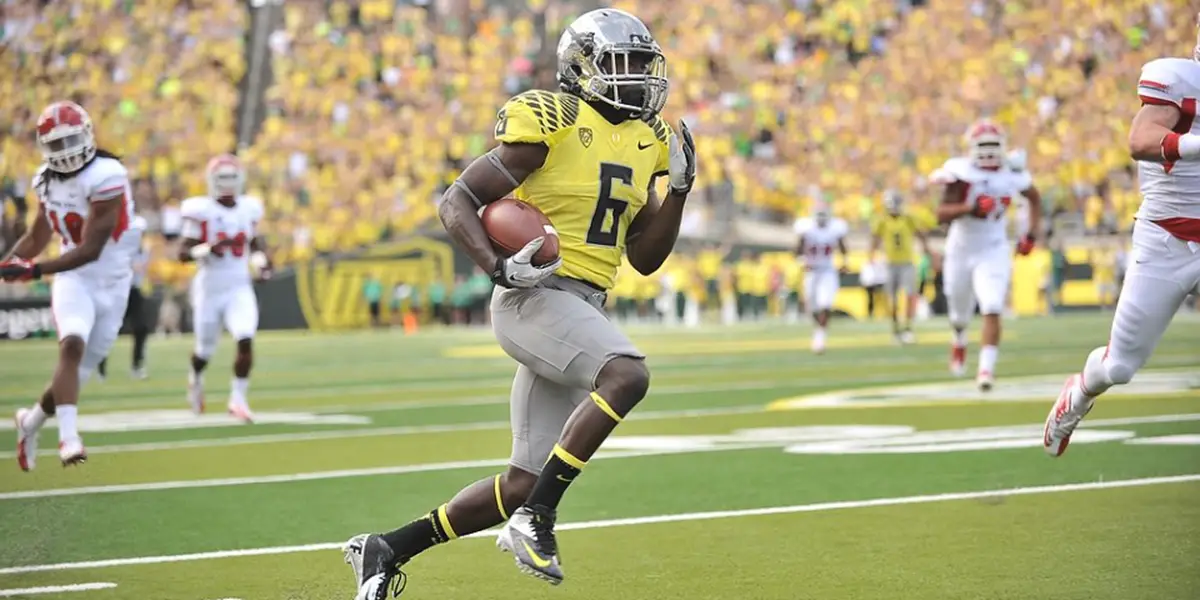Of all the great Oregon Ducks football teams of the early 2010s, the 2012 team might have been the greatest. In Chip Kelly’s final season as head coach, the Ducks’ hyperspeed, spread-option offense was at the peak of its powers.
For all but one game, Oregon was arguably the best team in college football. But a slip up against Stanford kept the Ducks out of the Pac-12 Championship Game and ultimately the BCS National Championship Game.
Just two years later, Oregon would suffer a similarly disappointing defeat during a promising season. But this time around, it still had a shot at a national title because of the newly implemented four-team College Football Playoff. So, what if the playoff had been around a couple of years earlier? Would the Ducks have made it then, too? Let’s take a trip down memory lane and imagine how the selection process for a four-team playoff in 2012 would have played out.
Who’s In?
As a refresher, the 2012 season was the second-to-last year of the BCS system, which relied on a series of polls to select the top two teams in the country. Notre Dame and Alabama finished No. 1 and No. 2, respectively, in the 2012 BCS rankings and they faced each other in the BCS National Championship Game. The Fighting Irish managed to navigate a relatively challenging schedule unscathed, finishing the regular season 12-0. Alabama, meanwhile, suffered a defeat at the hands of Heisman winner Johnny Manziel and Texas A&M late in the season, but it managed to rebound, finishing as one-loss SEC champions.
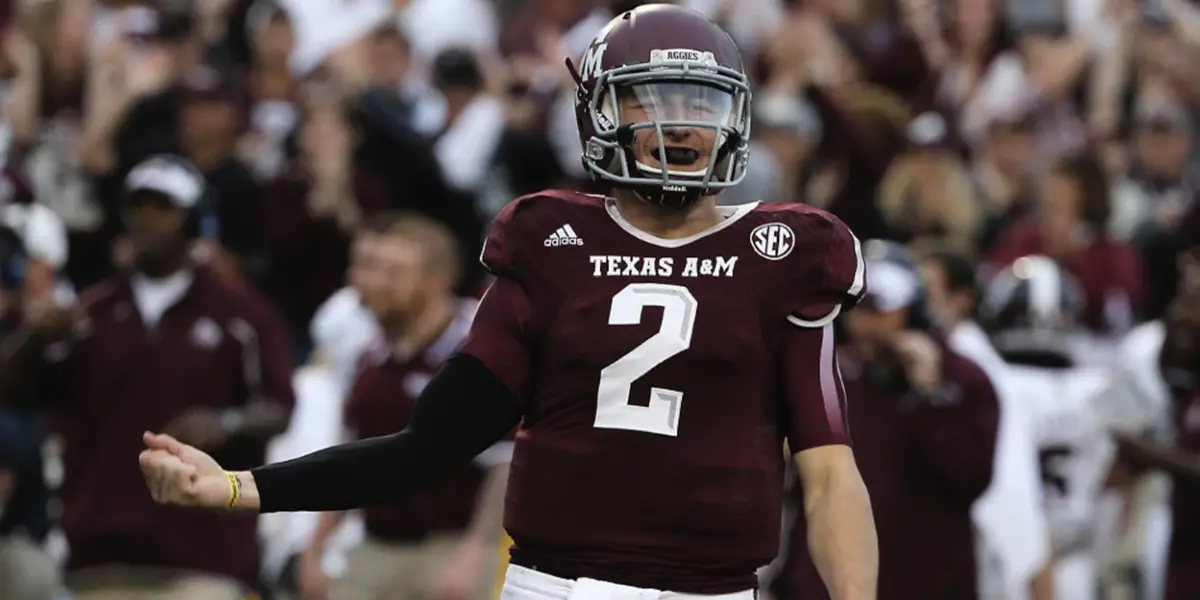
Manziel and the Aggies handed Alabama its only loss in 2012.
Even if the CFP had been in existence in 2012, it’s likely that Notre Dame and Alabama would still have been selected as the top two teams, only in reverse order (Alabama would have been No. 1, and Notre Dame would have been No. 2). Alabama would have leapfrogged the Fighting Irish because the Tide was far more dominant. It opened the season with a 41-14 blowout of then eighth-ranked Michigan* and went on to beat all of its unranked opponents by an average score of 42-6. (*All rankings according to the AP Poll.) The Tide beat three top-25 opponents (including then third-ranked Georgia in the SEC Championship Game), and its only loss was a one-score defeat against a Texas A&M team that finished the season ranked in the top five.
With one of the best defenses of the decade (the Tide led the country in total, rushing and scoring defense) and an offense that finally began to spread its wings under quarterback AJ McCarron (the Tide finished 12th in scoring offense), there’s no question that Alabama was the most complete and impressive team in the country by the season’s end.
Notre Dame would have been ranked No. 2 because it did go undefeated, and it surprisingly beat more top-25 teams than Alabama. But it won its games far less convincingly, nearly falling to unranked Pitt (the Irsih won 29-26 in triple overtime) and earning a controversial last-second win against Stanford. Notre Dame did have a stellar defense, led by Heisman finalist Manti Te’o and plenty of future NFL draft picks, but it lacked the eye-popping performances of the Crimson Tide.
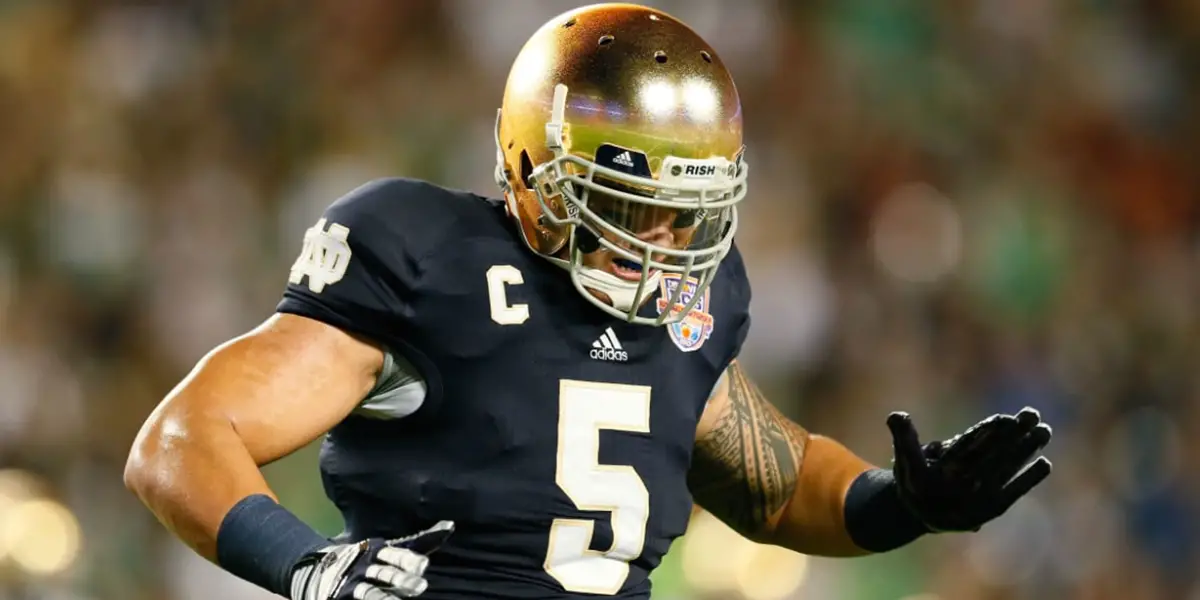
Te’o led a ferocious Notre Dame defense.
For the final two spots, the committee would have had to choose from an interesting pool of candidates. The most likely finalists would have been Oregon (the Ducks finished 11-1 but did not win their conference), Stanford (the Cardinal finished 11-2 and won its conference), Florida (the Gators finished 11-1 but did not win their conference) and Kansas State (the Wildcats finished 11-1 and won their conference). (It should be noted that Ohio State went 12-0 in 2012 but was under sanctions and not bowl-eligible.)
Among these four teams, Stanford would have had the least compelling playoff argument. The Cardinal did win the Pac-12, and it somehow managed to hold the second-highest scoring offense in college football to just 14 points. But Stanford lost two games, and it only beat one top-25 team outside of its upset win over Oregon. Although the Cardinal had a really good defense, the offense was underwhelming, and that led to the team playing in some close games against inferior opponents, such as a 24-17 win against the three-win Washington State Cougars.
The Cardinal would have been a longshot to make the playoff, but the Gators would have had a legitimate chance. Many remember Florida getting walloped by Louisville and Teddy Bridgewater in the Sugar Bowl following the 2012 regular season, but before that game (which doesn’t impact this imaginary panel since that game was in the postseason), the Gators were actually one of the best teams — and had one of the best resumes — in the country. Another defense-led team (Florida finished in the top five in both total and scoring defense in 2012), the Gators had a ridiculously challenging schedule, the most challenging of any playoff contender, and nearly made it through undefeated.
Florida beat five of the six top-25 opponents it faced, with wins against Manziel and the Aggies and the ACC Champion Florida State Seminoles. The Gators’ only loss was to Georgia in a 17-9 slugfest. That loss kept them out of the SEC Championship game, despite beating elite competition week in and week out.
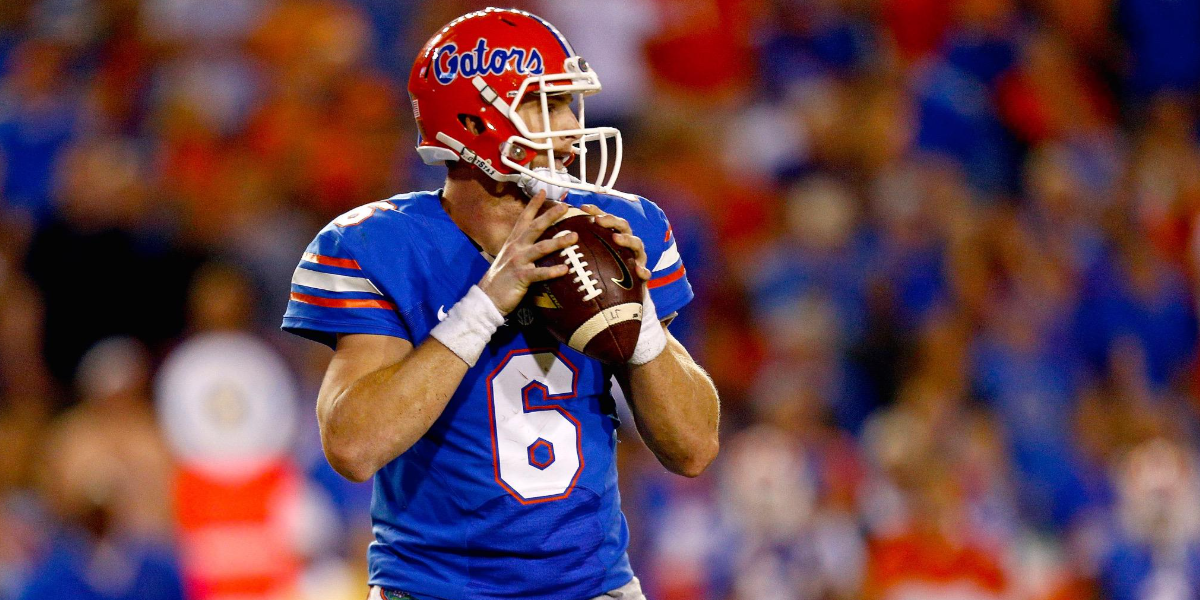
Jeff Driskel and the Gators were left out of the SEC Championship Game.
Although the Gators would have had an argument to make the playoff, it would have been hard to conclude that they were “unequivocally” one of the four best teams — a necessary criterion since they didn’t win their conference. Florida did face a daunting schedule, but like Stanford, it also really struggled on offense at times against inferior opponents. One-score wins against Missouri and Louisiana aren’t the type of results that the committee looks for when trying to justify the addition of a team that didn’t win its conference.
Kansas State, on the other hand, did manage to win its conference, and although they weren’t Oregon-level dominant, the Wildcats throttled their share of opponents. The Colin Klein-led Wildcats put up big numbers against solid competition, dropping 50-plus points on five opponents. Kansas State beat both of the powerhouses in the Big 12, Oklahoma and Texas, and it played like a legitimate playoff team for most of the season.
Of course, the elephant in the room is the 52-24 beatdown that the Wildcats suffered against unranked Baylor in the second-to-last week of the season. Losses can be forgivable, but suffering a double-digit loss to a team that was merely average usually eliminates a team from playoff contention. But in the case of the 2012 season, because of the lack of deserving Power 5 conference champions, Kansas State would have made the four-team playoff. The Wildcats were the best Power 5 conference champion not named Alabama, and it’s unlikely that the committee would have selected two teams that didn’t win their conference over them.
However, there was one team in 2012 that would have made the playoff even without winning its conference, and that’s the Oregon Ducks. The Ducks didn’t have the resume of Florida or the conference championship of Kansas State, but they so exceedingly passed the “eye test” that the committee would have had no choice but to vote them in.
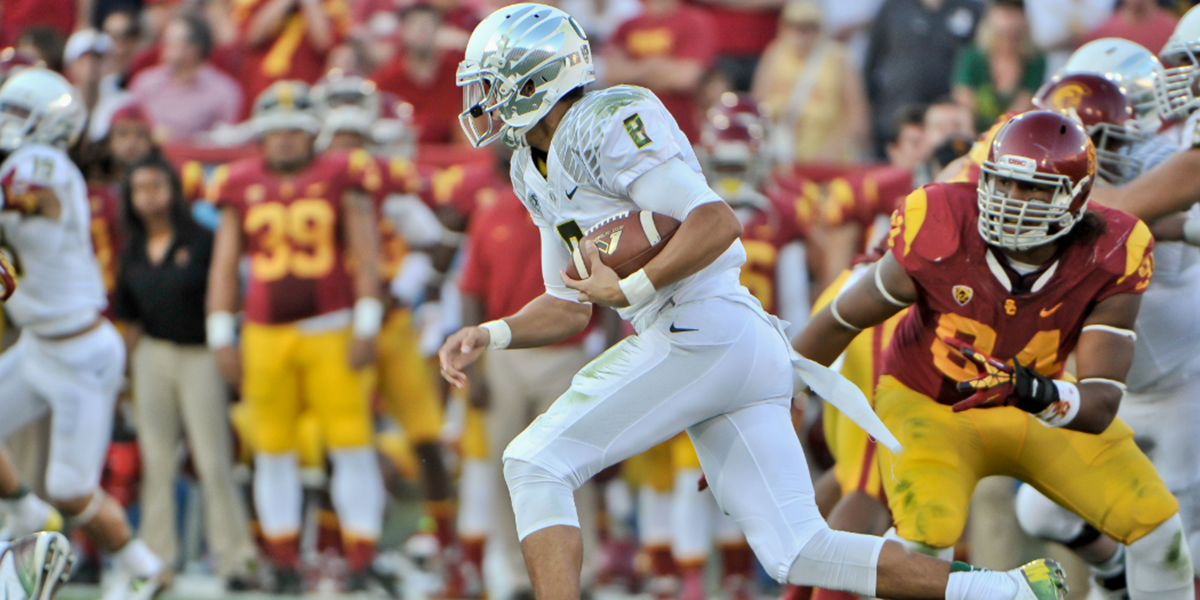
Oregon was undeniably one of the best teams in the country in 2012.
A freshman Marcus Mariota led an Oregon offense that averaged more than 300 rushing yards and 530 total yards per game — both top-five marks nationwide. Excluding its fateful loss against Stanford, Oregon averaged more than 54 points per game in 2012, winning every game by double digits. The Ducks averaged more points and yards per game in 2012 than in any other season under Kelly. And even Oregon’s defense was formidable, finishing as a top-25 scoring defense.
It was almost laughable how quickly and easily the Ducks would dispose of opponents. For 11 of their 12 games, the Ducks’ offense was one of the best the game has ever seen, and their defense was playing well enough to put games out of reach almost as soon as they started. Oregon did lose to Stanford, but that game was such an anomaly that the committee wouldn’t have considered it unforgivable. A Power 5 team that steamrolls all but one of its opponents, has an all-time great offense and a better-than-average defense (sound familiar?) is a lock to make the playoff in any given year.
So, here’s how a four-team playoff in 2012 would have looked: No. 1 Alabama, No. 2 Notre Dame, No. 3 Oregon, No. 4 Kansas State.
What do you think? Do you agree with this imaginary panel or is this playoff committee drinking too much green-and-yellow Kool-Aid?
Joshua Whitted
Morgantown, West VirginiaTop Photo by Kevin Cline
Related Articles:
Oregon Enters Playoffs Better Off Than Last Year
Will The Coaching Carousel Kill Oregon's CFP Chances?
The Playoff Formula Hasn't Changed
Oregon Aims to Bury Dawgs, Punch Playoff Ticket in Rivalry Clash
Huskies Are the New Beavers, Stay In Your Lane Kiffin, and the Civil Apple Cup War
Oregon Football: The X-Factor Vs. Washington
Joshua is an adopted Duck fanatic, originally hailing from southwestern Pennsylvania. His love for the University of Oregon began as a young child when he became mesmerized by the flashy uniforms and explosive offenses of the Chip Kelly era, and now, he follows the team religiously. His fondest memory of the team is seeing De’Anthony Thomas race past Wisconsin defenders back in the 2012 Rose Bowl. A true football enthusiast, Joshua loves studying the intricacies of the game, and he aspires to become a professional sports journalist. Joshua now resides in Morgantown, West Virginia where he works in customer service. When he’s not watching Oregon replays, Joshua loves reading, writing, and spending time with his family. Contact: whittedjd@gmail.com

